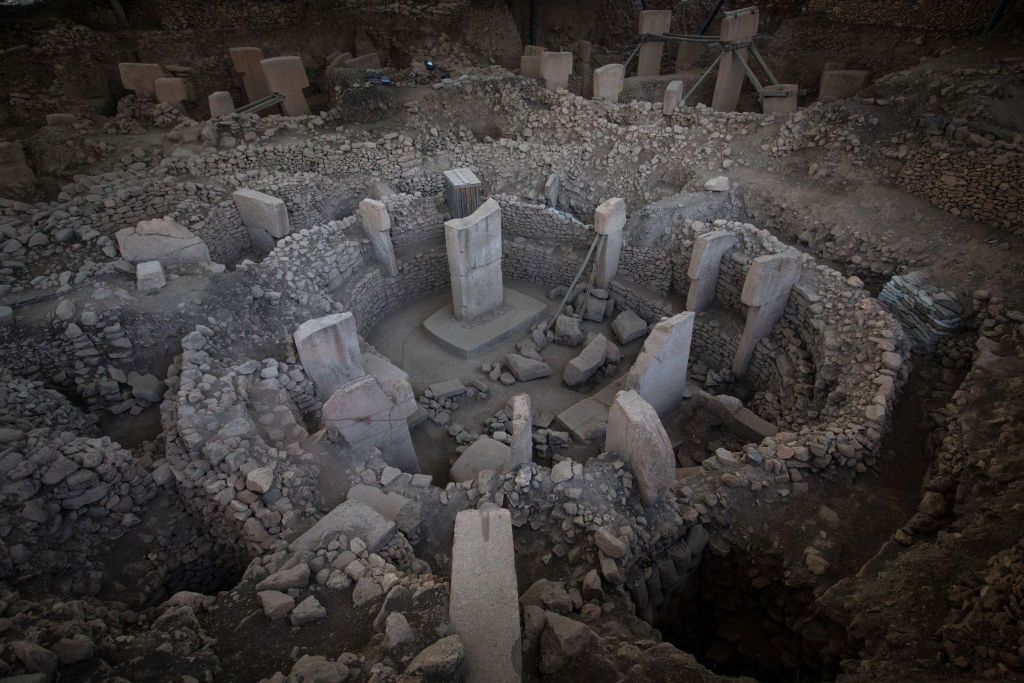
Scientists Found a 12,000-Year-Old Monument—Turns Out It May Be Humanity’s Oldest Calendar
But just how, exactly, did it track time?
Scientists Found a 12,000-Year-Old Monument—Turns Out It May Be Humanity’s Oldest Calendar
But just how, exactly, did it track time?
By Tim NewcombPublished: Aug 09, 2024 10:43 AM EDT

Chris McGrath//Getty Images
Carvings on a 12,000-year-old monument in Turkey appear to mark solar days and years, making it possibly the oldest solar calendar in ancient civilization.
Marking a massive comet strike as the start, inhabitants used symbols to record every astronomical event, including those as small as single days.
The summer solstice was called out on the monument as a special day.
An ancient monument discovered in Turkey may just be an ancient monument. But, if its markings are what experts think they are, it might be the world’s oldest solar calendar.
In a study published in Time and Mind based on the work of researchers from the University of Edinburgh, experts write that markings at Göbekli Tepe in southern Turkey, a temple-like archaeological complex filled with intricately carved symbols, indicate the makings of a solar calendar that tracks days, seasons, and years.
By analyzing the symbols carved onto pillars, the team believes that every “V” could represent a single day, given that one pillar featured 365 days. And among those, the summer solstice in particular was highlighted with a V worn around the neck of a bird-like beast meant to represent the summer solstice constellation during that time. The calendar explanation could help explain why the V symbol appears on so many other nearby statues of deities linked to time and creation, with the V almost always showing up around their neck.
The calendar’s preoccupation with day, night, and seasonal changes may have sparked anew with a world-changing comet strike, one that experts believed occurred in roughly 10,850 B.C. and helped contribute to a mini-ice age that eliminated numerous species.
“It appears the inhabitants of Gobekli Tepe were keen observers of the sky,” Martin Sweatman, lead study researcher from the University of Edinburgh’s School of Engineering, said in a statement. “Which is to be expected given their world had been devastated by a comet strike. The event might have triggered civilization by initiating a new religion and by motivating developments in agriculture to cope with the cold climate. Possibly, their attempts to record what they saw are the first steps toward the development of writing millennia later.”
The carvings also track cycles for both the Moon and the sun, which pre-date other calendar finds of this type by “many millennia,” the group wrote. By tracking the movements of meteors and the Earth, the ancient research may have also shown for the first time that comet strikes happen more when Earth’s orbit crosses the path of circling comet fragments, something modern-day researchers have proven.
To help support this theory, the team points to another pillar at the site appearing to picture the Taurid meteor stream lasting 27 days, which was quite possibly the source of the ancient comet strike.
The researchers believe that the temple carvings show the ancient civilization was recording dates precisely, noting how the movement of constellations across the sky differed based on the time of the year. This would be 10,000 years before Hipparchus of ancient Greece documented the wobble in the Earth’s axis in 150 BC, making this newfound calendar well ahead of its time.





 History and Science
History and Science